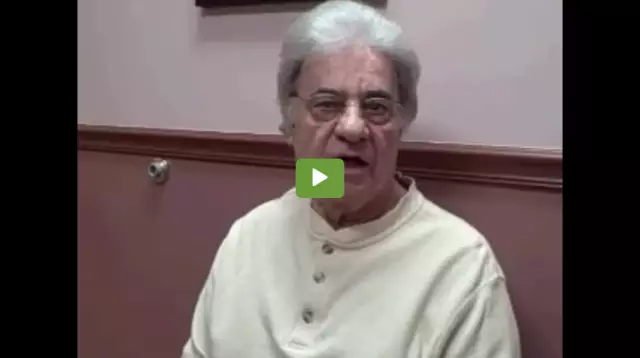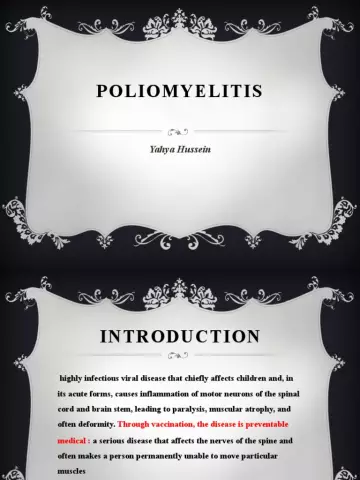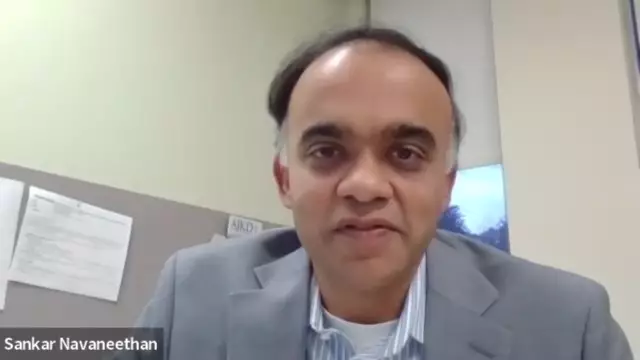- Author Rachel Wainwright [email protected].
- Public 2023-12-15 07:39.
- Last modified 2025-11-02 20:14.
Haemophilus influenzae
Basic information about the disease

Surprisingly, if abroad the Haemophilus influenzae is subject to mandatory vaccination, then in our country everything is different. Many parents do not even know what Haemophilus influenzae is and, therefore, do not take any measures to prevent infection. However, the neutral position of doctors on this issue is quite understandable, because vaccination should be carried out at the expense of the state, but the fight against Haemophilus influenzae is not provided for by the national vaccination calendar and no funds are allocated for it.
To be honest, this state of affairs is a little scary. Pathogens of Haemophilus influenzae live in the upper respiratory tract of any person. As a rule, they do not pose a danger to healthy people, but with a weakened immunity, the hemophilic bacillus begins to multiply intensively and provokes the appearance of a whole "bouquet" of sores, including: meningitis, pneumonia, epiglottitis and purulent cellulite. The risk group includes people who have had serious illnesses and children under the age of 5 years in whom the body cannot yet develop its own antibodies against infection. The peak incidence occurs at 6-12 months, when the protective systems of the child's body are no longer supported by the mother's milk and begin to work independently.
Today, up to 40% of children are carriers of Haemophilus influenzae, and at any time it can enter the active phase and begin its destructive work. Concerns are also caused by the fact that the infection is easily transmitted by airborne droplets, or through direct contact with the things of a sick person.
Why is the population not vaccinated?
To answer this question, you need to have an idea of some of the features of the hemophilus influenzae. Physicians know 6 types of pathogens of Haemophilus influenzae, but only one of them, namely type B, poses a threat to children and adults. It would seem that the task is being simplified, but this is just a delusion. The fact is that Haemophilus influenzae, the treatment of which seems to be a matter of technology, is extremely resistant to antibiotics. On all sides it is surrounded by a kind of capsule. This protective membrane successfully restrains the main components of drugs and, in addition, makes it difficult to produce antibodies. As a result, the percentage of Haemophilus influenzae resistance to penicillin, chloramphenicol, tetracycline and other antibiotics ranges from 80 to 100%.
The treatment of Haemophilus influenzae is very difficult due to the imperfection of domestic diagnostic technologies. Kits that can detect Haemophilus influenzae are produced only abroad and are quite expensive. This is one of the main reasons for the rejection of universal vaccination against Haemophilus influenzae.
Why is vaccination necessary?
We have already mentioned above that Haemophilus influenzae contributes to many other diseases. Scientific studies have shown that after vaccination, many children generally stopped suffering from acute respiratory infections or were sick no more than 1-2 times a year. In addition, there are two more good reasons to fight the consequences of Haemophilus influenzae. Vaccinations help:
- reduce to zero the likelihood of "catching" meningitis or pneumonia in the first years of a child's life;
- prepare the child for constant communication with peers, which is inevitable when visiting kindergarten and school. It is during this period that the frequency of infections transferred by the baby increases. Vaccination reduces the risk of infection and the development of severe complications.
Haemophilus influenzae - treatment and prevention of the disease

Since mass vaccination is not carried out in our country, you will have to rely only on yourself, since in recent years new means of combating Haemophilus influenzae have appeared. One of them is protein conjugate vaccines, which are quite successful in dealing with infection. In Russia, the French drug Act-HIB from the Avensti Pasteur company has become widespread.
The vaccine is indicated for children from 2 months. It contains tetanus toxoid, which helps to strengthen the immune response. If a child develops Haemophilus influenzae, Act-Hib vaccinations will reduce the risk of infection and secondary diseases.
Vaccine use for children of different age groups:
- up to 6 months - 3 injections with an interval of 2 months. One year after the 3rd injection, a booster dose is administered;
- from 6 to 12 months - 2 injections with a break of 1 month. Revaccination dose - after 18 months;
- from 1 to 5 years - 1 injection.
Short side effects are possible: redness of the skin at the injection site, irritability, drowsiness.
YouTube video related to the article:
The information is generalized and provided for informational purposes only. At the first sign of illness, see your doctor. Self-medication is hazardous to health!






